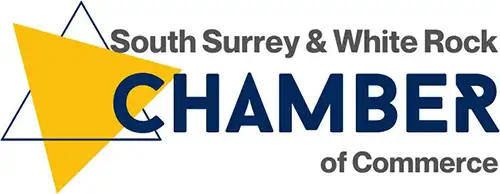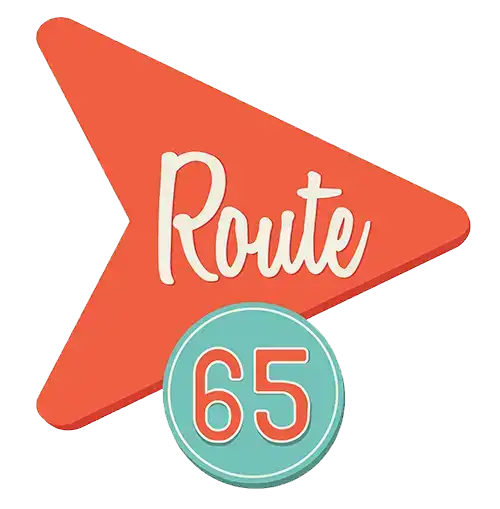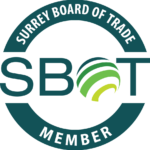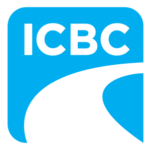
If you’re feeling overwhelmed trying to navigate the home care system in British Columbia, you are not alone.
For most Metro Vancouver families, trying to figure out what Fraser Health or Vancouver Coastal Health covers, versus what you have to find yourself—is a confusing and stressful maze. You’re juggling work, family, and now this, and you just want a clear answer.
We’re here to help. We’ve guided many families through this exact process. This guide is designed to cut through the confusion, give you an honest look at how the public system really works, and show you how to build a complete plan that actually covers all your loved one’s needs.
TL;DR: Your 30-Second Guide
- Public vs. Private: We first explain the two systems. Public care is the subsidized “safety net” from the Health Authority. Private care is the flexible, comprehensive service you hire to fill all gaps.
- Public Care Has Gaps: The public system is designed for basic, short “tasks” (like a 30-min bath). It is not designed for companionship, meal prep, or consistent care.
- The “Hybrid Model” is the Solution: The best plan is to use the subsidized public hours and add a trusted private partner (like us) to “fill the gaps.” This gives you complete coverage and peace of mind.
It feels like a maze, doesn’t it? One minute, you’re a daughter or son, and the next, you feel like an unofficial case manager trying to figure out “The System.”
You’ve heard about public care and private care, but what’s the real difference? Let’s clarify that first.
The Two Paths: Public vs. Private Care Explained
When you start looking for help, you’ll immediately encounter two different “paths.” Understanding both is the key to building a plan that works.
- The Public System (Health Authority Care) This is the subsidized care provided by the government through your local health authority (like Vancouver Coastal Health or Fraser Health). It’s designed as a safety net to provide essential health and personal care to those who qualify. Access to this system is determined by a formal assessment from a Case Manager, and you pay a co-payment based on income. It’s the foundation of care for many.
- The Private System (Private Home Care) This is flexible, one-on-one care that you arrange and pay for directly with a provider (like Guarding Life Care). This system is designed to fill all the gaps the public system doesn’t cover—from companionship and meal prep to specialized dementia care. There is no assessment required to start, and you get to choose the caregiver, services, and schedule. It’s the comprehensive solution.
For 99% of families, the solution isn’t one or the other. It’s about knowing how to use both. For most people, the journey starts with a call to the public system.
“The System” — A Simple Guide to BC’s Public Home Care
Let’s be honest: navigating the public system can feel like a full-time job. The language is confusing, the waitlists are long, and it’s hard to know where to even begin.
We’ve guided many families in Metro Vancouver through this exact process. So let’s take a deep breath and break it down, step-by-step.
Step 1: The First Call (Who to Contact)
Your first step is to contact your local health authority. This is the “front door” to all subsidized home and community care services.
For most of us in the Lower Mainland, that means one of two places:
- Vancouver Coastal Health (if your loved one lives in Vancouver, Richmond, or the North Shore). You can find their Home and Community Care contact page here.
- Fraser Health (for Burnaby, New West, Tri-Cities, Surrey, and the Fraser Valley). You can find their Home and Community Care contact page here.
You’ll be asking for the “Home and Community Care” office, sometimes called “Central Intake.” This is where you will request an in-home assessment for your parents to get Vancouver Coastal Health home support or Fraser Health home support.
Step 2: The Assessment (What to Expect)
After your call, a “Case Manager” (that’s the official title) will schedule a time to visit your loved one at home.
This isn’t a test, and it’s not something to be nervous about. It’s simply a conversation to understand your parents’ needs. They’ll use a standardized form to see what your parent can do on their own and where they need help.
To make this go smoothly, it’s a good idea to have a few things ready:
- Your parents B.C. Services Card (CareCard)
- A list of all their current medications
- The name and number of their family doctor
- Any legal documents, like a Representation Agreement (if you have one)
This might feel like a lot to prepare, but think of it this way: wouldn’t you rather have one 30-minute meeting where you have all the answers, rather than ten follow-up phone calls?
A friendly tip: You should absolutely be there for the assessment if you can. Your parent might say “I’m fine!” when they’re not. You’re their advocate, and you can provide the full picture of what’s really going on, from the missed meals to the isolation you’re worried about.
The Public Path:
- You Call: Contact your Health Authority’s Home & Community Care.
- They Visit: A Case Manager comes to the home for an assessment.
- You Get a Plan: You’ll receive a care plan and a “client rate” (your co-payment).
- You Wait: Service begins, but you may be on a waitlist.
Step 3: The Result (What You “Get”)
Here is the part that’s most often misunderstood.
After the assessment, the case manager will create a care plan. This means the government pays for some of the cost, and you pay a co-payment (called the “client rate”) based on your parents’ income. This plan is also limited to a set number of hours for just a few specific tasks, like help with bathing.
The actual cost of home care in BC varies, and this “client rate” is calculated based on income. You can learn more about it from the BC Government’s official “Who Pays for Care” page.
This is a vital first step, but as many families quickly discover, it’s often just a foundation. It’s not the whole solution.
The “Honest Conversation” — Understanding the Gaps in Public Care
Now that we’ve outlined both the public system and the private option, let’s be honest about why most families end up needing both.
You’ve made the calls, had the assessment, and received the care plan. You feel a moment of relief… until the service starts, and you discover the gaps.
Think of the public system as a leaky umbrella. It’s great to have in a light drizzle (like a simple check-in), but it won’t keep your loved one warm and dry in a rainstorm of complex, daily needs.
This is the part no one warns you about, and it’s where the real stress and burnout begin.
Studies from organizations like Family Caregivers of British Columbia show that family caregivers in B.C. report extremely high levels of distress. This caregiver burnout in BC is often from trying to fill the gaps in the formal healthcare system.
The public system is a vital safety net. But it is a net, full of holes. It was built to provide basic safety, not comprehensive, dignified care.
Let’s be open about the three gaps you will likely encounter:
1. The Time Gap
Public home support visits are often very short—sometimes only 30 or 45 minutes. This is “task-based” care. It may be just enough time for a community health worker to do a quick “bird bath” or help your parent get dressed, but not enough time for an unhurried, dignified bath. It’s functional, but it can feel impersonal and rushed.
2. The Service Gap
This is the big one. Public home support is not designed to cover the very things that make a life whole. You will quickly find that the following are not included:
- Companionship: combating the loneliness and isolation you worry about.
- Meal Preparation: beyond simply heating a pre-made meal.
- Light Housekeeping: like laundry or tidying the kitchen.
- Transportation: for groceries, errands, or doctor’s appointments.
3. The Consistency Gap
This is often the most frustrating gap, especially for a loved one with dementia or Alzheimer’s. Because of staffing shortages, you will likely get a different caregiver at the door every day.
The Solution — Using a “Hybrid Model” to Fill the Gaps
So, what’s the answer? It’s not “public care or” private care.”
For most families, the best, most cost-effective, and most compassionate of all BC senior care options is “public care and” private care.
We call this the “Hybrid Model.” You use the subsidized public system for what it’s good at, and you fill the critical gaps with a trusted, professional private partner. This way, you get a complete, 360-degree plan that covers your parent’s safety, health, and happiness.
How the Hybrid Model Works in Practice
Let’s say your dad gets one 45-minute subsidized visit from the public system in the morning.
- 9:00 AM: The public health worker arrives to help your dad with his morning bath and medication.
- 9:45 AM: The public health worker leaves.
- 9:45 AM: Your trusted Guarding Life Care caregiver arrives for a 3-hour visit. She greets your dad by name, makes him his favourite breakfast, puts on a load of laundry, and sits with him to read the paper.
- Later: She drives him to his doctor’s appointment and provides you with a full update.
When comparing home care options, it’s important to see the full picture. While both the public system and a private partner like Guarding Life Care can provide fundamental support, such as help with morning bathing and medications, the public system’s services are often limited to just these basics.
A private partner, however, is typically designed to offer a more comprehensive, holistic solution. This includes essential daily support that the public system may not, such as meal preparation, housekeeping, laundry, errands, and transportation. Crucially, private care also focuses on quality-of-life factors by providing consistent companionship and, when needed, specialized dementia care, ensuring a stable and supportive environment for your loved one.
Key Takeaway: The Hybrid Model isn’t about paying twice; it’s about building one complete, gap-free care plan.
Conclusion: You’re Not Juggling Anymore. You’re Building a Team.
This journey can feel lonely, but it doesn’t have to be.
The feeling of “juggling” and constant worry stops when you have a solid plan. Now you have one. You know that the public system is a good start for basic safety, but you also know its limitations.
The “hybrid model”—blending that public foundation with the compassionate, consistent, and specialized support of a private partner—is how you move from feeling overwhelmed to feeling in control. It’s how you ensure your loved one isn’t just safe, but also happy, engaged, and able to live with the dignity they deserve.
Your Next Step
You don’t have to figure out the details alone. We’re here to be your local resource.
Call us today at (236) 473-1021 or send us an email for a free, no-obligation consultation. We’ll listen to your story, answer your questions about the public system, and help you build a care plan that works for your entire family.







